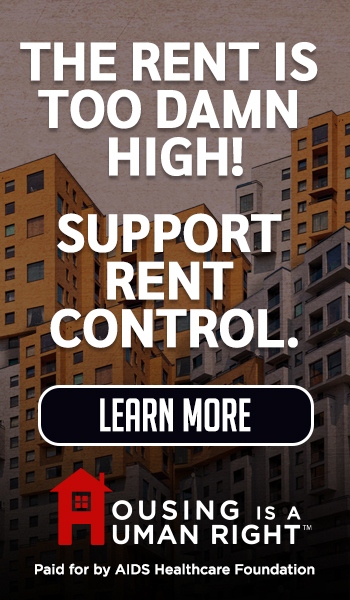Comments
PARK DEVELOPMENT - There is a major land use decision coming in Santa Monica, about what will happen when Santa Monica Airport (SMO) is closed on January 1, 2029, based upon a consent agreement reached between the City of Santa Monica and the Federal Aviation Administration back in January 2017. On July 8, 2025 the Santa Monica City Council will give direction to City Staff on what land use model should be developed, as the preferred alternative in the City’s Environmental Impact Review process. With many community members arguing for a Great Park to be built on all the soon-to-be open space, this decision will have significant implications not just for Santa Monica, but for the entire Westside and Los Angeles overall, with the paucity of open spaces across available in our urban environment and the unlikelihood of another parcel of this size to ever become available again for new open space.
Why there should be a Great Park on all 160 acres of new open space when Santa Monica Airport is closed / Why the preferred alternative to be studied in the EIR should be a fully Measure LC-compliant Great Park.
A letter to the Santa Monica City Council, June 3, 2025
By Mike Feinstein
Santa Monica resident since 1984
Mayor 2000-2002, City Council member 1996-2004
(1) The need for an LC Compliant Preferred Alternative
The reason so many community advocates have long called for a Great Park on the entire Santa Monica Airport (SMO) parcel, is that such a path offers the best opportunity to maximize a range of needed community recreational and open spaces - active and passive.
By contrast, reducing the amount of space dedicated to a Great Park would directly pit needed active and passive open space uses against each other — and would limit our ability to create desperately needed ecologically-oriented spaces in our urban environment.
This loss would not be just numerical and quantitative. It would be qualitative and exponential.
In front of us today, Santa Monica has a once-in-centuries opportunity to create a legacy open space that would be enjoyed by millions over generations.
In 2014 Santa Monica voters passed Measure LC with 60.45%, putting into the City Charter to “prohibit new development on Airport land, except for parks, public open spaces and public recreational facilities” unless there were a future ballot measure otherwise.
The responsible path to current and future generations is to fully evaluate that open space potential, by making an LC-compliant Great Park option the preferred option in the EIR, so that this option can be more fully fine-tuned and understood. Then if we later want to take from it and do less, we will know what we would be giving up. But if don’t pursue this now, we won’t be able to do so.
That would be historically irresponsible on a never-before-seen scale in our city.
(2) Can’t negate the need for parks and open space to justify a non-LC compliant preferred alternative
In arguing for non-LC Compliant uses, some have attempted to minimize the depth and breadth of Santa Monica’s need for more parks and open space, rather than acknowledging it but then also arguing that there are competing needs. At best this approach is tone deaf to reality. An example of such factually out-of-touch arguments was made by one of the presenters at the April 23 Democratic Club forum:
“But if you look at Clover Park, it's the passive uses that are really busy and the big sports fields that are empty most of the week because I walk there frequently. I'm not against sports fields, but I am for housing. If you think about our parks, we're not park poor.”
Not park poor?! I wrote to City Staff about Clover Park and received the following response:
“Regarding Clover Park—and athletic fields citywide—it's important to clarify that while fields may appear open during certain hours (like weekday mornings or early afternoons), our fields are consistently booked to capacity during peak demand times, which are: Weekdays from 2:30 PM to 10:00 PM, and Weekends from 8:00 AM to 5:00 PM.”
“These prime hours are when the vast majority of youth and adult sports organizations are looking to schedule practices and games.”
“While it’s true that a field may be empty at 11 AM on a Tuesday, that doesn't reflect the broader reality of demand during usable hours for most residents—particularly families and school-aged children. In fact, the demand on turf fields is so high that many organizations are forced to shorten practices or seek field space in neighboring cities. To manage this, we implement a seasonal allocation plan that prioritizes sports based on time of year, helping to fairly distribute access across dozens of local organizations.”
“We understand that not everyone is engaged in youth or adult sports, and the perception of underused fields during off-peak hours can raise questions. But from a programming, revenue, and community engagement standpoint, our fields are among the most heavily utilized—and highly valued—resources in the city.”
By all measures of urban planning, it is unquestionable that Santa Monica is substantially under-parked, at only 1.4 acres of parkland and open space per 1000 residents. At the city’s current 92,000 population level Santa Monica is severely “park poor” by all Los Angeles County, State of California, and national measures.
The is magnified when one considers Santa Monica as part of LA’s Westside. The Los Angeles Countywide Parks and Recreation Needs Assessment (2016) deems Santa Monica, Mar Vista (.5 acres/1000), and Venice (.9 acres/1000) all areas of “high park acre need.” Los Angeles County’s Park and Equity Facts page references an “‘accepted standard’ of four acres/1000.”
In terms of mental, physical, environmental and economic health for our community, the benefits of more active and passive open spaces are unquestionable. Not only do we need many more outlets for athletics and sports, but we need need the ability to just ‘be’ in more healing/nature spaces near-to-home — for all Santa Monicans — and especially the 2/3 that are renters with little or no personal open space of their own.
Any worldview that fails to recognize the primacy of this need in our urban environment reflects a proverbial ‘frog in the boiling water’ mentality in our concrete jungle, thinking that a few acres of open space here and there between buildings is sufficient. It is not.
Of course large, large contiguous great parks also offer the great benefits of multiple ecosystem services like habitat and biodiversity, urban heat island reduction and cleaning our air and water — all what should be obvious priorities for a ‘sustainable city.’
As a City Council, you have a legacy decision in front of you on July 8.
Those seeking to amend Measure LC to allow non-LC compliant uses have every right to argue there are also other pressing community needs.
But one can not support such an argument by understating the need for more active and passive open space in Santa Monica. If understating this substantial need is part of any argument to pursue a non-LC-compliant option as the preferred alternative, it would not be well-informed, and would be completely out of touch with reality.
(3) Expanding Sunset Park development into SMO would negate Santa Monica’s basic sound urban planning principles
For decades — for a range of sound social and environmental reasons — Santa Monica has prioritized new housing to be added along our public transit corridors, and in our downtown and former industrial areas. This approach has been continued in the City’s latest zoning update following its last Housing Element.
Building a large housing project at SMO would contradict all of that.
Little of SMO is near transit, making any new housing development more automobile-dependent. Most of SMO lacks infrastructure like streets, water and sewer lines, and utilities. The high cost of developing new public infrastructure at SMO would need to be added to the already high cost of building housing - especially affordable housing - compared to the financial, land use and other synergies that new infill housing would realize, where such infrastructure already exists.
That is not to mention the absence of any future neighborhood markets and community-serving retail at SMO that would promote pedestrian orientation and reduce car trips caused by those living there — unless SMO housing advocates are suggesting amending Measure LC to add commercial uses to SMO as well, which would likely not go well with many voters if such a measure would go the ballot.
By any reasonable urban planning concept, new housing on undeveloped or isolated land at SMO would not have the social, financial or environmental benefits of urban infill development. Instead, such semi-suburban housing at SMO would effectively be urban sprawl for Santa Monica, by expanding Sunset Park away from Santa Monica’s urban centers and transit corridors into new open space when the airport is closed — and even further from urban centers and transit corridors in neighboring Los Angeles.
Any argument that ignores this urban planning contradiction to justify a non LC-compliant option as the preferred alternative turns urban environmentalism on its head, and flies in the face of Santa Monica’s long-standing commitment to sustainability.
Furthermore, while there is room for increased housing density in several parts of Santa Monica, there are no other parcels that could be converted into park use, that would even remotely help Santa Monica go from its current severe park shortage - only 1.4 acres/1,000 people — to the accepted urban planning standard of four acres/1,000 people.
Of the 192 acres at SMO, only about 160 are undeveloped open space (i.e. without buildings.) If those 160 acres become a Great Park, this would add approximately 1.7 park acres per 1000 residents — meaning even after adding a Great Park, Santa Monica still will be able to offer only about 3.1 total acres/1000 residents at current population levels.
But what about future population growth? Given that this is the last large open space available in Santa Monica (and probably on the whole Westside) — and that the City is adding and will continue to add density and population in the future, Santa Monica’s park acreage-to-residents ratio will likely fall back into the high-need range.
In other words, while there are other places in Santa Monica to add more housing, only a Great Park on all 160 acres of open space at SMO offers any realistic opportunity to begin to balance Santa Monica’s existing residential density, let alone the substantial increase it will likely add over the next century — a supreme matter of social justice, livability and well-being for present and future generations.
Any argument that ignores this in order to pursue a non LC-compliant option is effectively sending an emphatic ‘no’ to the needs of tens of thousands of current and future residents, especially those living in rental properties with little to no private open space of their own.
(4) Saying the quiet park out loud — any non LC-compliant path before the airport is closed is political Hari Kari — and threatens the ability of Santa Monica to close the airport
Any move to prioritize a non-LC compliant plan before the airport closes by making it the preferred alternative in the EIR — and especially any subsequent ballot measure to amend LC in 2026 and/or 2028 that flows from it — runs an unforgivable risk that SMO land will not come back to the community for widespread public use.
Despite the success of Measure LC in 2014, the threat remains of a new ballot measure from the aviation industry to keep SMO operating as an airport. That threat will be intensified if there is any attempt or plan to amend Measure LC before airport closure in 2029.
The aviation lobby knows it can’t defeat a pure park. But they firmly believe they can defeat anything involving housing or commercial development. If aviation interests hire signature gatherers to qualify a ballot measure to perpetuate the airport like they did in 2014, they will use fear and capitalize on any confusion or discouragement the public perceives about the park. Any ballot measure to amend LC - and even simply a Council-approved plan that would require it — would give them this ammunition.
In 2014, aviation interests tried to paint LC supporters as ‘shills’ for developers, but it didn’t work. With any kind of ballot measure involving housing or development it will, because aviation interests will say that Measure LC's promise of parkland was a bait-and-switch, playing upon the fears of those skeptical that a Great Park would ever be built at SMO.
Current aviation-created memes are based on "the park won’t happen, its too expensive, and when it fails you’ll get the usual development.” A housing ballot measure will confirm that — and aviation lobby will immediately swoop in with their own ballot measure to counter it.
What chance would an amendment to LC that would provide for a large housing project at SMO have in such an environment?
Santa Monica voters have been supportive of housing over the decades. But no local pro-housing ballot measure has ever faced a million dollars spent against it. That's what aviation spent in 2014 to qualify their Measure D, that would have kept the airport in operation.
In November 2014 Measure D received only 41%, in part because there was a united front to close the airport.
But with a base of 41% who voted to keep the airport, aviation interests only need another 9+% to win. They can get that if the public is confused or discouraged about the park — and the aviation lobby is just waiting for a housing vs. park fight, because the coalition that won Measure LC with 60% would be fractured.
If there were competing ballot measures to (i) keep the airport in operation and (ii) amend Measure LC to substantially cut back parkland in order to build a large housing project at SMO, thousands of Great Park supporters in Santa Monica - many who support new housing as urban infill in other parts of the city - would logically oppose both.
If aviation interests then won between competing ballot initiatives, our public land at SMO would remain privatized, and we’d lose this historic opportunity to bring it back into widespread public use. Even the revenue the City receives from leasing offices at the airport (that could fund future ongoing Great Park operations) would remain in the Airport Fund and not be available for other purposes.
To ensure that no ballot measure is even necessary to implement a fully LC-compliant approach, the Council should direct City Staff to return with a zoning overlay and/or Specific Plan to resolve all non-LC compliance issues for “conventional park features.”
Conclusion
Owing to the effort of thousands of us over decades working to close Santa Monica Airport and bring the land back into widespread public use, Santa Monica has a historic legacy opportunity in front of it.
A Great Park on the entire 160 open acres at SMO offers the best opportunity to realize a wide range of community open spaces, achieve ecological goals, and provide a desperately needed balance to Santa Monica’s current and future residential density.
There is urgency to this moment. Open land on this scale, perfect and necessary for a great park, will likely never be assembled again in Santa Monica. Any portion paved over and built upon would never become available for widespread public use. And if a new park were substantially cut down in size, the ability to address a wide range of social and environmental needs with it would be substantially compromised.
That’s why any failure to advance an LC-compliant Great Park as the preferred EIR option, that instead prioritizes a large housing project that would necessitate a ballot measure to amend LC — a ballot measure that would be opposed and likely defeated by a competing measure sponsored by aviation interests — risks grasping defeat from the jaws of victory.
Any path other than advancing an LC-compliant Great Park would be a failure of epochal proportion — a self-induced fumbling away of a once-in-centuries opportunity to regain public land for fundamental public purposes that can not be addressed in any other way (while other competing needs can.)
Therefore, with hope for the best and dread of the worst — I recommend that you advance a fully LC-compliant Great Park approach as the preferred option in the EIR.
If you do, future generations will look upon your decision with immense gratitude, as will other species and the Earth.
(Mike Feinstein has been a resident of Santa Monica since 1984. A dedicated public servant, he served on the Santa Monica City Council from 1996 to 2004, including a two-year term as Mayor from 2000 to 2002. Feinstein is known for his long-standing commitment to environmental sustainability, community engagement, and local governance.)






